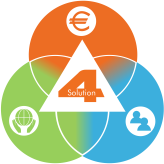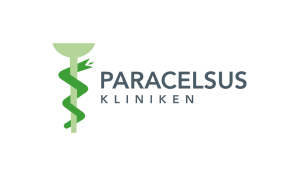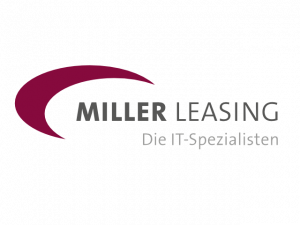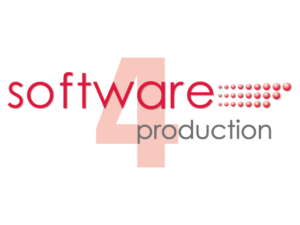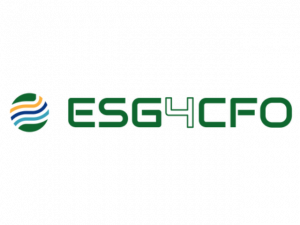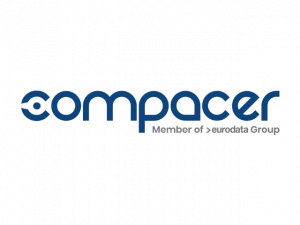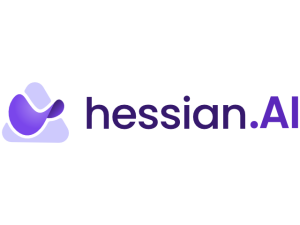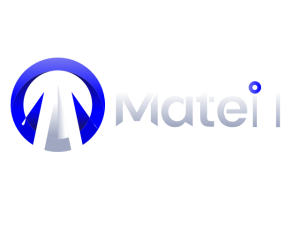EFFECTS of the hospital reform on CONTROLLING
Hospitals and clinics are under increasing pressure to increase their economic efficiency and meet regulatory requirements. The hospital reform has a significant impact on controlling in hospitals, as it entails fundamental changes in the financing, organization and management of hospital operations.
Here are the key aspects:
1. introduction of performance groups and quality criteria
The reform provides for medical services to be organized into service groups that must meet specific quality criteria. These criteria are a prerequisite for billing and require close monitoring and documentation by the controlling department.
2. reserve financing instead of pure flat rates per case
Traditional DRG-based remuneration will be supplemented by a system of reserve financing in which 60% of previous DRG revenues will be made available as a lump sum for reserve costs. This leads to a redistribution of funds and requires a more precise cost analysis at service group level in order to ensure economic stability.
3. complexity and administrative effort
The new requirements, such as compliance with structural and quality criteria and the triennial reassessment of reserve budgets, significantly increase the administrative workload. Controlling must increasingly collect and analyze data and prepare reports to ensure compliance with these requirements.
4. strategic adjustments to the reporting system
While the focus was previously on specialist departments, the focus is now shifting to the service group level. This requires a change in cost unit accounting and reporting in order to create transparency and comparability.
The CHALLENGES in hospital controlling
Well-structured controlling is essential to ensure transparency, efficiency and fair remuneration in hospitals. Despite the challenges, long-term benefits can be achieved through targeted investments in digitalization, data management and expertise.
Advantages of voluntary participation in InEK-CALCULATION
Participation in the InEK calculation is a valuable tool for the economic management of hospitals. It not only provides transparency about cost structures, but also helps to ensure fair remuneration, support strategic decisions and leverage efficiency potential. It enables better management, benchmarking and strategic planning. At the same time, hospitals benefit from a stronger position in the DRG system, which ensures their long-term competitiveness.
AEP Solutions GmbH can provide support with customized BI solutions to increase the efficiency of controlling processes and make clinics “InEK-ready”.
Controlling in hospitals
DRG AND INEK CALCULATION
with Solution4
Requirements & solutions
Controlling in the healthcare sector and in hospitals in particular encompasses various aspects,
all of which are aimed at increasing the effectiveness and efficiency of operational processes. The constantly
changing healthcare policy environment increases the pressure on controlling enormously. In this context,
the following already known requirements are crystallizing, and their urgency is increasing:
1. cost unit accounting
One of the most important tasks in hospital controlling is the transparent allocation of all relevant costs incurred in the treatment of patients to the cost units. Cost unit accounting is used to record and analyze the costs of the various areas and departments of a hospital in relation to the patient case.
2. budgeting
Systematic budgeting is an important aspect of controlling in hospitals vis-à-vis stakeholders. This involves drawing up an annual budget that takes into account the hospital’s expected income and expenditure. The budget serves as a basis for planning and as an instrument for monitoring the economic development of the hospital.
3. pre-systems
Controlling in hospitals is confronted with a large amount of heterogeneous data in many upstream systems and subsystems. Enormous amounts of data from various upstream systems have to be processed: HIS, EPA, OR book, FIBU, materials management with a heterogeneous structure, e.g. PPR minutes, nursing days, weighted intensive care hours, intensive care hours, incision-suture time, set-up times, anesthesiology time, delivery room stay, points according to the service catalog must be processed together.

Solution
A proven and modified standard for post-calculation from the industry is applied to the hospital. Standardized outputs and reports create transparency at the touch of a button, right down to the patient case and service provider level. Only the patient’s anonymized admission number is required in the system.

Solution
As a proven standard, a plan budget can be derived on the basis of billed patient cases and created with little effort. The planning depth, whether department or DRG, is freely selectable.

Solution
Connection of all relevant upstream systems and consolidation of the data in a separate database. There are flexible interfaces that can be set up without any programming. AEP systems support controlling and increase transparency for internal and external stakeholders (management, advisory board, health insurance funds, InEK…). This enables controlling to analyze all necessary data in a resource-saving and almost ad-hoc manner.
4. stakeholder management
Another important aspect of controlling in hospitals is communication with external stakeholders such as health insurance funds and the InEK. The aim here is to create the necessary transparency when settling accounts with the health insurance funds, in particular when justifying additional charges, and to adapt hospital reporting to the constantly changing legal requirements.
5. internal reporting
Controlling in hospitals regularly prepares reports and analyses. The interests of the internal addressees relate to the department or DRG level. This transparency contributes significantly to the economic and medical performance of the
hospital. The large number of data sources also presents controlling with major challenges in internal reporting.
6. external reporting
For external recipients such as health insurance companies or costing institutes, the reporting details regularly go right down to the individual case level. Reforms in the healthcare policy environment also increase the pressure on controlling. Hospitals are also obliged to provide corporate sustainability reporting (CSRD) and must comply with their reporting obligations from the 2025 financial year. In CSR reporting, companies submit a declaration on the concepts, risks and performance they pursue with regard to environmental, employee and social issues.

Solution
Using a standardized post-calculation, all values and consumptions from the previous systems are compiled anonymously for the patient case and evaluated with the system’s internal cost accounting. This means that all services and materials (implants, medication, etc.) charged to the patient are transparent and traceable.

Solution
Solution4 offers comprehensive integration of all data sources. The system creates transparency to the desired depth at all times, regardless of whether it is the department, DRG or case result. At the touch of a button, the controlling department receives all directly booked and invoiced cost components as well as the service provided, transparently shown down to the individual case. Standardized reports and outputs considerably reduce the workload involved in preparing reports.

Solution
The AEP system logic and the triple bottom line approach considerably simplify CSRD reporting. This means that a company acts sustainably if it pursues economic, environmental, charitable and social goals at the same level. The holistically coordinated AEP modules and their seamless interlocking make it much easier to fulfill external reporting obligations.
BENEFITS
For corporate management
- Budgeting and financial planning are integral components of the software
- Time savings through automated processes
- Dashboard with any key figures for important business decisions tailored to your needs
- Reliable, transparent figures for health insurance companies and auditors
- Use of specialist expertise to optimize processes
For controlling
- Fast and clear master data maintenance
- Facilitated automated month-end closing with extensive error logs
- Comprehensive reporting at the touch of a button, e.g. department results
- Powerful analysis tool for efficient work Transparent calculation data with detailed view down to individual record level
- Calculation database can also be used for budget negotiations with health insurers
- Planning of any number of independent scenarios (best-case, worst-case, frozen budget)
- Calculation results with different valuation bases can be displayed in parallel
For the InEK calculation
- Simple consolidation of all data from different areas of the company (wards, OR, accounting, materials management, purchasing, etc.)
- Standardized cost centre and cost type structure according to InEK specifications
- Transparent identification of all associated services, materials and direct costs on the patient case
- Analysis of DRG groups down to individual rate level (case) including InEK standard matrix
- Automated system-supported case consolidation
- Results output in InEK-compliant output, e.g. as CSV
- Quick corrections in individual calculation rounds
For IT
- Modern multi-layer architecture
- Web application, runs in any browser
- Operating system and device-independent, suitable for PC and tablet
- Cloud-ready
- Support for a variety of database systems (MS SQL Server, Oracle, Postgre-SQL, MySQL etc.)
- standardized, manufacturer-independent, open, high-performance and therefore future-proof
- Data protection-compliant anonymized patient data
REFERENCES
Reference Kerckhoff-Klinik Bad Nauheim
Implementation Solution4
- Connection of the upstream systems FiBu, KIS, MaWi etc. via configured interfaces
- Determination of normalized cost rates, assignment of the internal cost center/cost element structure to the specified InEK matrix
- Support in carrying out the entire InEK calculation process in the AEP system
Conclusion
- Successful participation in InEK costing over several years
- Low personnel costs during implementation due to high level of automation and transparency in the AEP system
- Rapid amortization of investment costs for the AEP system through InEK reimbursement
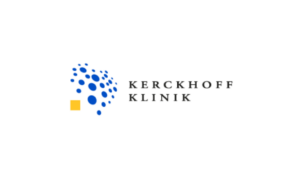
Reference Paracelsus Clinic Elena Kassel
Implementation Solution4
- Short-term implementation of the InEK calculation process at a location selected for InEK calculation
- Connection to financial accounting via configured interface
Conclusion
- Successful initial participation in the InEK calculation 2023 and 2024 after the draw with timely submission with the help of experienced AEP consultants
- Creation of a concept for further successful participation and connection of the necessary upstream systems and their consolidation in the AEP system

Why SOLUTION4?
– Industry expertise: Over 20 years of experience in the digitalization of hospital processes.
– Modular flexibility: Adaptable to individual requirements – from basic care to maximum care.
– Future-proof: preparation for future regulations such as the EU taxonomy or extended ESG standards.
– DRG calculation (Diagnosis-Related Groups):
– Automated calculation of flat rates per case based on diagnoses, treatment duration and resource consumption.
– Integration of cost center and cost unit accounting for precise service accounting. Cost transparency at the touch of a button down to department and DRG case level
– InEK calculation (Institute for the Hospital Remuneration System):
– Mapping of German case cost calculation with flexible schemes for cost types, cost centers and cost units.
– Support for special cases such as long-stay surcharges or short-stay days.
– Consideration of annual overstayers, carrying of case statuses
– Consideration of simultaneity factors for operations.
Further information
Act now!
Deadlines & next steps
With AEP Solution4, you can transform regulatory obligations into strategic opportunities – for a sustainable and economically stable future for your hospital.
